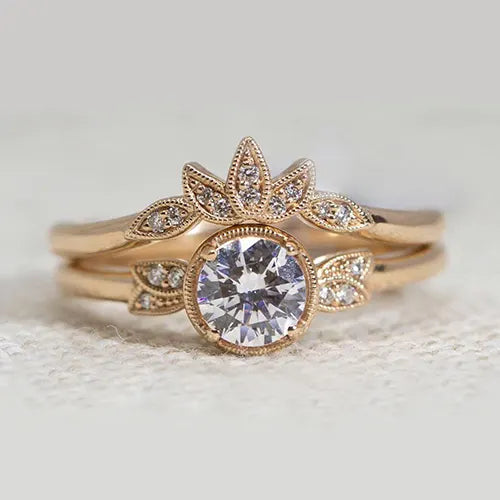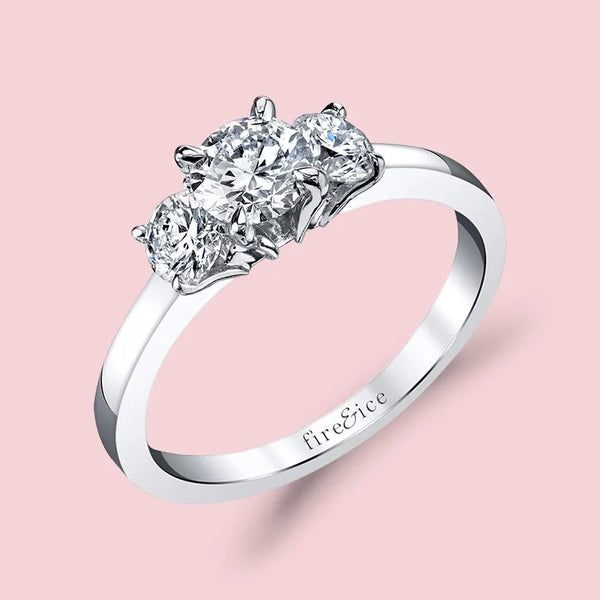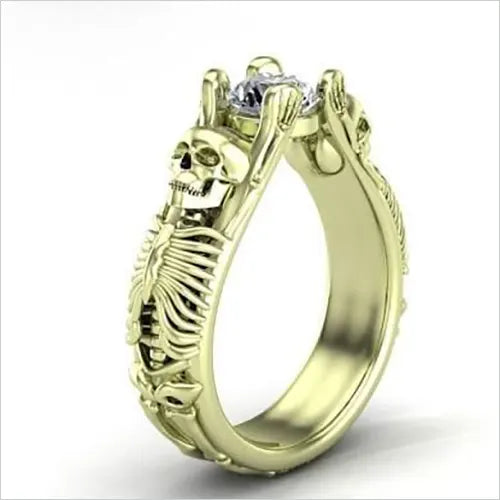
Everyone loves gold. However, purchasing gold jewelry for yourself or as a gift can be a process full of confusing choices. You want to be sure you are getting a quality piece of jewelry but the special markings, color choices, and purity levels are all too much. What does everything mean? Is there a big difference between types of gold? Is one color more popular than another? Look no further, today we are going to dive into the world of gold and explain the need-to-knows to make sure your next purchase is absolutely perfect.
With gold available in a variety of colors and purities let us look at a few of the most popular for jewelry.
Color
Yellow is the only naturally occurring color of gold, and pure gold is extremely soft and malleable, making its use in jewelry rare. Jewelry gold is an alloy, a mixture of metals, with several different metals used as the mixing agent to create the colors of gold we love. Gold can be combined in an alloy with silver, copper, zinc, palladium, and nickel to create different gold colors. The most common colors for jewelry gold are yellow, white, rose, and green. There is no naturally occurring white, rose, or green gold.
Yellow gold is made by mixing pure gold with silver, copper, and zinc. Yellow gold retains the purest color of all gold colors and is the most hypo-allergenic. Yellow gold shines when contrasted with olive and darker skin tones. Traditional yellow gold also requires the least maintenance of all the gold colors. Yellow gold benefitted from the World War II declaration of platinum as a strategic metal, making yellow gold the primary choice for jewelry makers across the country. The past 75 years have seen yellow gold remain a popular choice for engagement rings and jewelry.

White gold is a combination of gold and platinum (or palladium). Often, nickel and zinc are also used in conjunction with gold and palladium to produce white gold. These combinations make white gold more durable and scratch resistant than yellow gold. The alloy construction of the metal makes white gold more affordable than both yellow gold or platinum in their purer forms. White gold benefits from a more contemporary look than yellow gold, making it ideal for jewelry.

Rose gold (or pink gold) is an alloy constructed using gold, copper, and silver. Because it uses inexpensive copper to produce the rose color, this metal is also more affordable than other types of gold. As a combination of three metals rose gold is more durable than white or yellow gold and retains its shine, eliminating the need for rhodium plating. Rose gold does contain copper, so if you are purchasing for someone with very sensitive skin, you may want to abstain from rose gold.

Green gold, or Electrum, is gold mixed with silver, and sometimes copper. The introduction of silver is what provides the subtle green nuance to the color of the gold. Unless you are familiar with the appearance of green gold, the name can be deceiving. The green color is very subtle and can best be described as yellow gold with a slightly green tint. As a naturally occurring alloy, green gold was popular in ancient jewelry.

With four different choices, which color is the most popular? Yellow gold held the top spot for several decades, due in part to the war effort and the use of other metals. When the price of gold started to increase, many people turned to white gold. For the last twenty to thirty years, white gold has been the most popular color, especially for wedding and engagement rings. Rose and green gold are newer creations but are quickly gaining popularity.
Purity
When it comes to the purity of gold jewelry, the first thing to look for is the karat mark. Denoted by a stamped “K”, the karat mark indicates the gold content of the jewelry piece. Next to the stamped K is a manufacturer’s trademark which is there to assure you that the karat mark is accurate. But what does the karat mark mean, and what is the difference between 24K, 18K, 14K, and 10K?
The easiest way to think about gold purity is to use the karat scale as a parts system. 24K is pure gold or 24 of 24 parts gold. When you slide down the scale, you decrease the purity in proportion. So 18K gold is 18 parts gold and 6 parts other metals, making it 75% pure gold. While 24K is pure gold, it is unusual to find the 24K mark on jewelry because pure gold is soft and malleable and prone to scratching and bending. This softness is the key reason that gold is mixed with other metals for jewelry, to make it more durable. With the addition of other metals, 18K and 14K gold are ideal for the construction of jewelry as they are more durable and longer lasting than 24K gold. In the United States, you will most likely see the 14K mark as this blend of 14 parts gold and 10 parts other metals is the most common construction in jewelry with 59% pure gold. Of note, it is illegal to mark or sell jewelry as “gold” according to U.S. law if the gold is under 10K.
When choosing which type of gold to pursue for your next piece of jewelry there are a mountain of choices. Considering the durability, the color, and the purity are all factors to help you choose a piece that will last a lifetime and look good well into the future. If you have any questions, please stop by and speak with us; we are here to give you the information you need to make the best choice for you.


